“A few years ago, I was asked by the Napa Valley Museum to prepare a painting and a series of panels to show the process for creating the work,” says Larry Cannon. “Two years previously, they had a similar set of panels prepared to demonstrate the steps in an oil painting, and they wanted to educate their audience by showing them some of the differences in approach between a transparent and an opaque medium.”

“I chose an image from the Point Lobos State Nature Preserve at the north terminus of Big Sur — a location where I have painted annually for the past dozen years. The image shows Monastery Beach, a popular diving cove. The scene had all of the things I look for when I paint – a clear focal point, good lead-in lines into the composition, and the early morning overcast mood I have come to cherish.”

STEP 1
“I generally spend at least an hour or more to select a subject and do a light sketch to clearly establish the focal point, my lead-in shapes, and the major masses.”

STEP 2
“While I sometimes paint around the whites that I wish to save, most of the time I use masking fluid to more clearly refine the white shapes.”
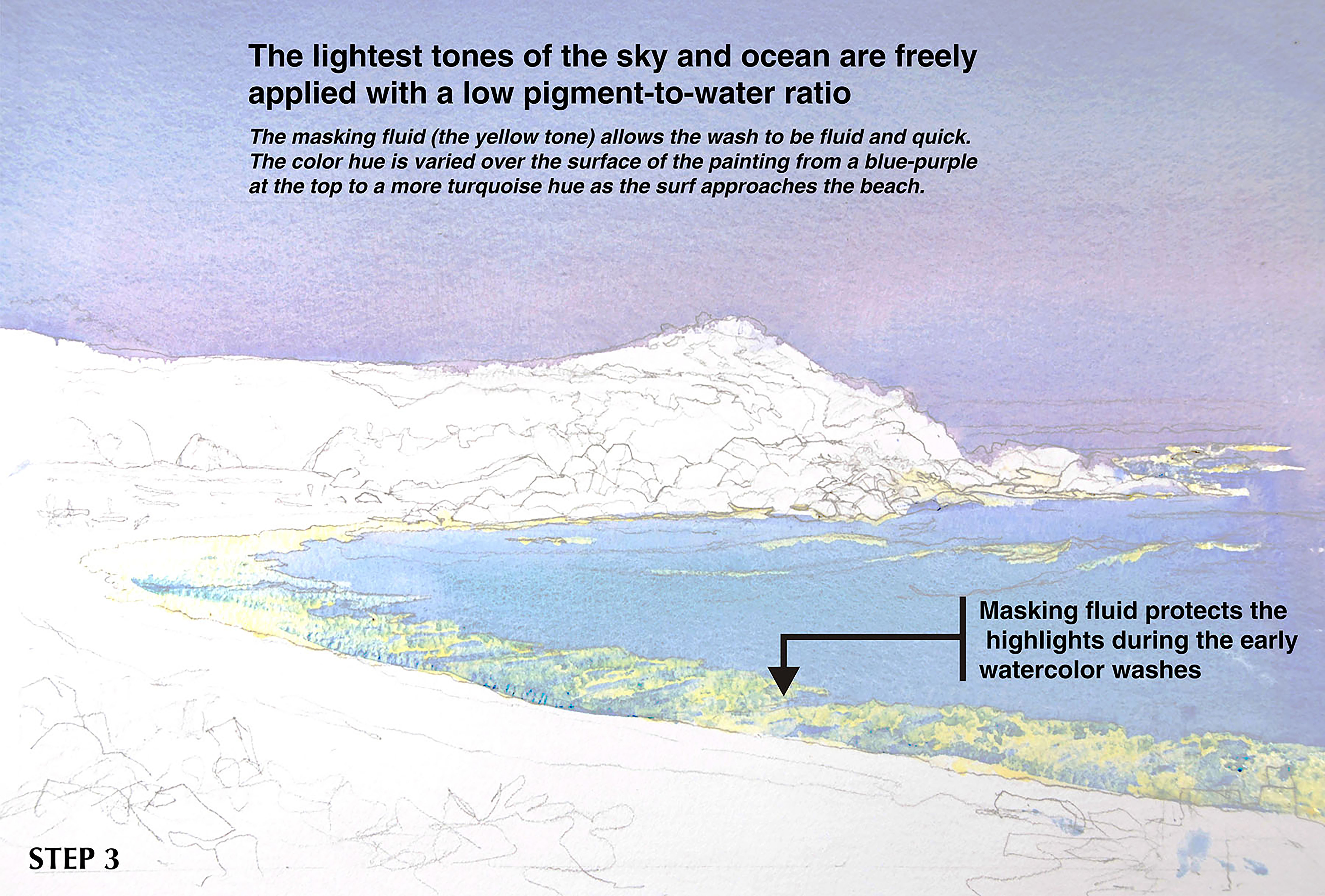
STEP 3
“I sometimes flood the paper with a light ‘ghost wash’ extending over the entire composition, but on seascapes I often prefer to wash in the blues of the sky and the water with cobalt blue, rose madder genuine, and viridian for the water closest to the shoreline. The masking fluid allows me to paint with some abandon and leaves time for adjustments with additional wet-into-wet washes, without worrying about cutting around the initial saved paper areas.”
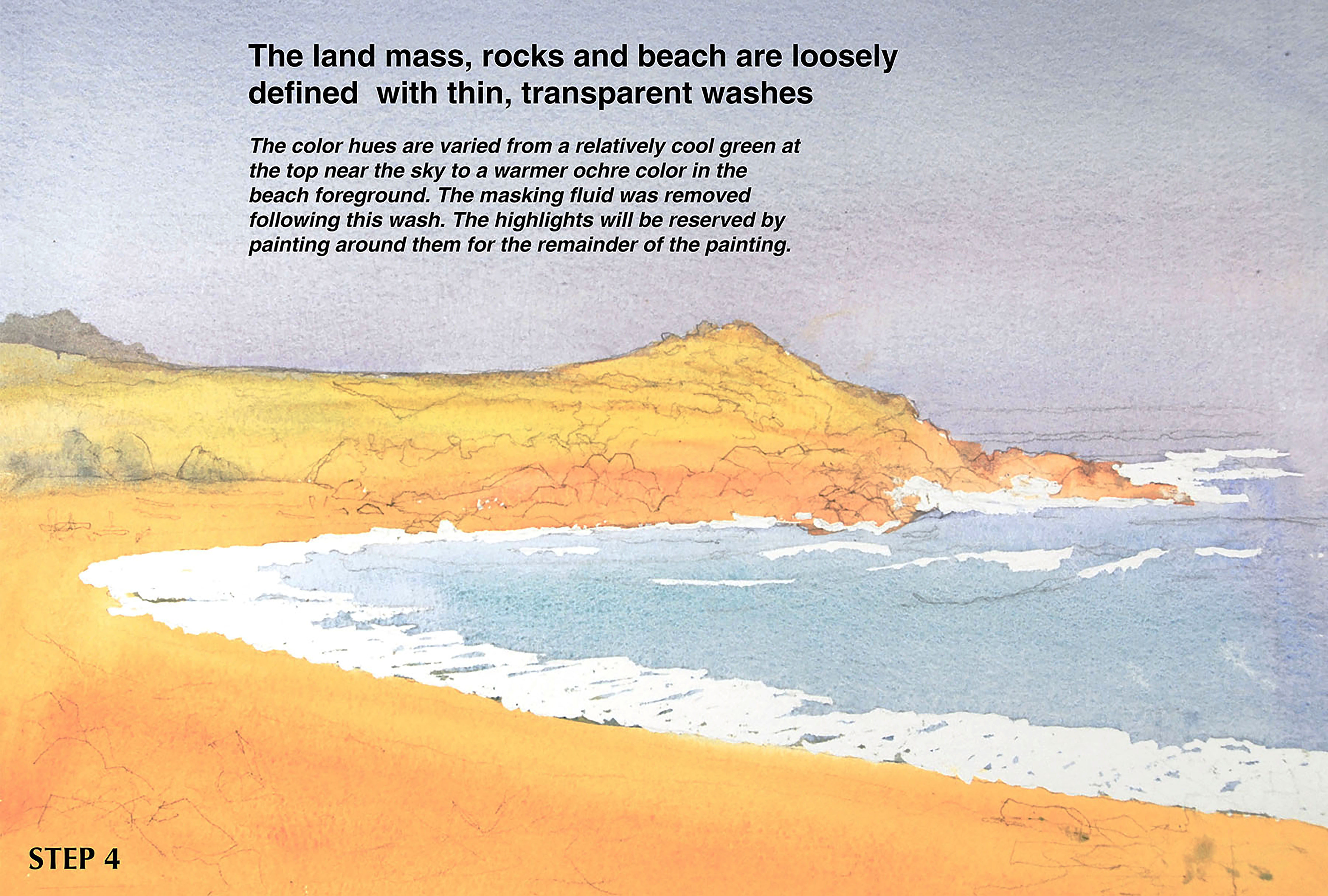
STEP 4
“I follow with a warm color complementary to the cool sky and water washes using raw sienna and burnt sienna.”
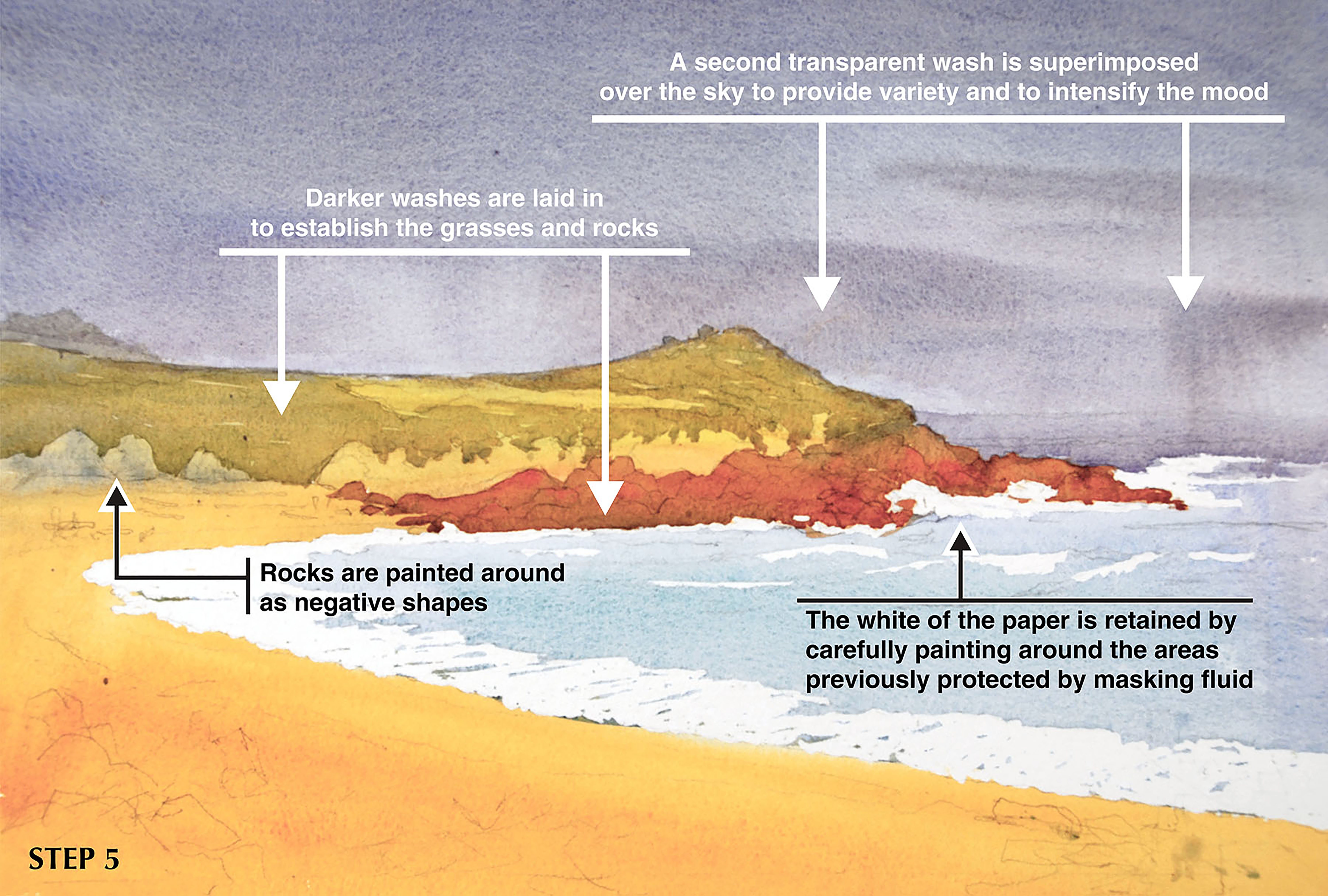
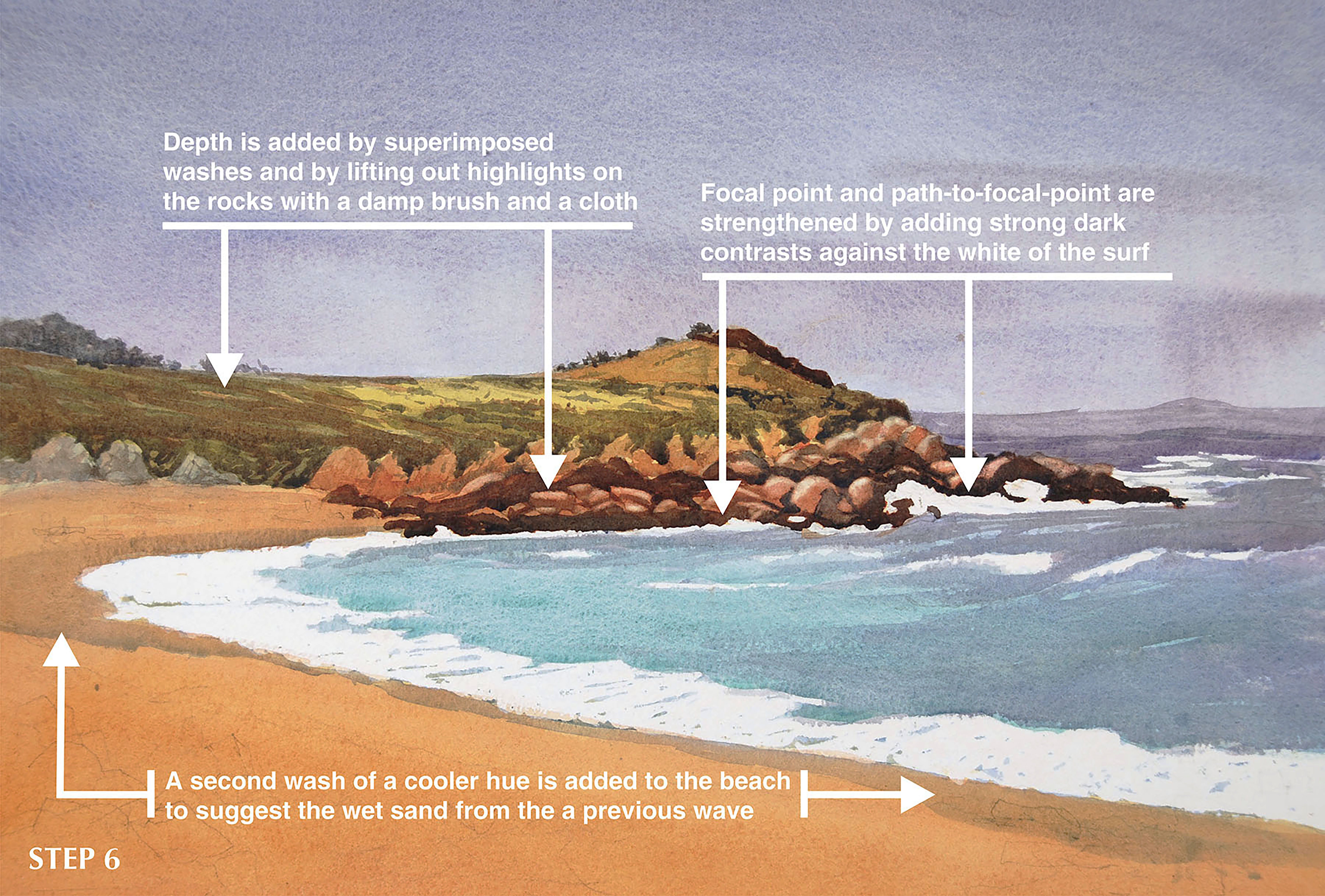
STEPS 5 and 6
“I remove the masking fluid and proceed with the classic 19th-century British watercolor technique of layering washes to add some depth and texture to both the land and the water forms. I spend a fair amount of time at this point modulating and softening the areas where the masking fluid had been removed, since those areas can easily look harsh and unnatural. This is usually accomplished with a very small, stiff scrubber brush and blotting with tissues. On occasion, I do not shy away from the aggressive use of a knife blade.
“At this point, the primary focal point of the breaking surf at the seaward rocks and the secondary focal point of the brighter field of flowers on the bluff top are reinforced. I also add varied over-washes, glazes, and details, always with an effort to allow earlier washes to show through and add depth and substance to the painting.”
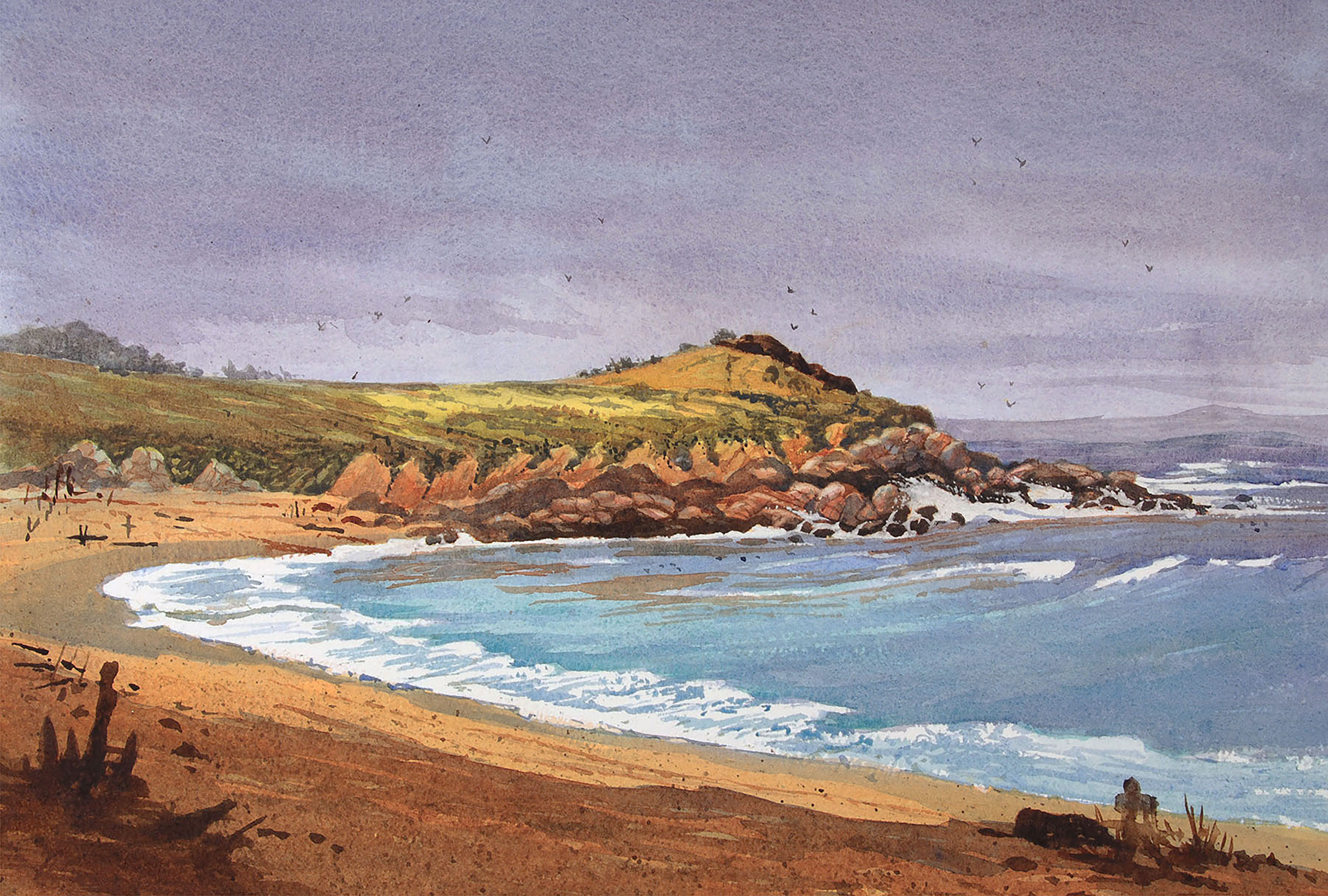
“Monastery Beach is a little brighter than the source photo, but I was satisfied that it captured the essence of this California coastal site and the mood of the day.”

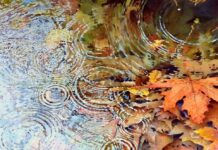
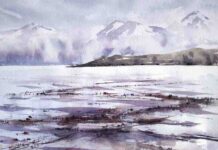





Great help with color choices, masking and multiple washes. Needs to stress washes need to be dry.